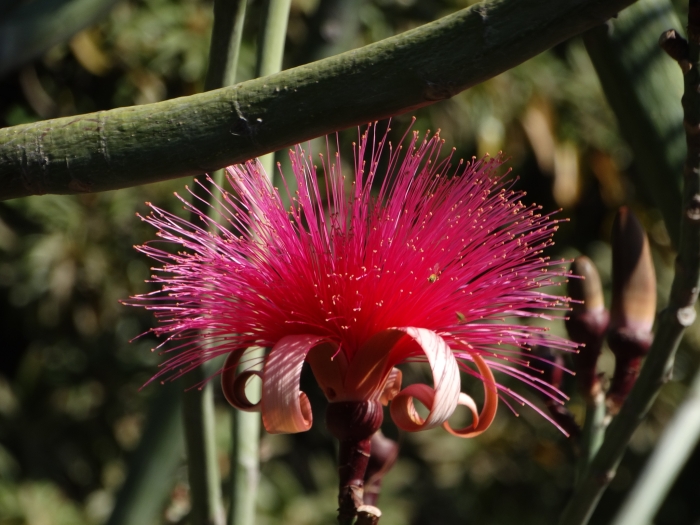Dr. Seuss Tree
(Pseudobombax ellipticum)
Dr. Seuss Tree (Pseudobombax ellipticum)
/
/

Juan Rafael Rodríguez Razgado
CC BY 4.0
Image By:
Juan Rafael Rodríguez Razgado
Recorded By:
Copyright:
CC BY 4.0
Copyright Notice:
Photo by: Juan Rafael Rodríguez Razgado | License Type: CC BY 4.0 | License URL: http://creativecommons.org/licenses/by/4.0/ | Rights Holder: Juan Rafael Rodríguez Razgado | Publisher: iNaturalist | Date Created: 2018-03-04T10:34:37-08:00 |



















Estimated Native Range
Summary
Pseudobombax ellipticum, commonly known as Dr. Seuss Tree, is a deciduous tree native to dry forests and thorn scrub habitats in Central America, Mexico, and the Windward Islands. This species is characterized by its thick, succulent stems and a distinctive growth form with branches often starting close to the base, giving it a unique, almost whimsical appearance reminiscent of illustrations by Dr. Seuss. It can reach up to 18 meters (60 feet) in height and 1.3 meters (4 feet) in diameter. The tree produces large, showy, white to pink flowers that are fragrant and sticky when peeled back. These blossoms are followed by the production of hundreds of tiny black seeds, each about 0.1mm, which can germinate within approximately 30 days.
The Dr. Seuss Tree is valued for its striking architectural form and is often used as a focal point in tropical and subtropical landscapes. It is drought-tolerant and requires minimal maintenance once established, making it suitable for xeriscaping. While it thrives in full sun and well-drained soils, it can also tolerate a range of soil types, provided they have good drainage. Gardeners should be aware that the tree’s large size and succulent stems mean it may not be suitable for small gardens or areas with limited space. Additionally, the sticky flowers can create a mess when they fall, so placement should be considered to avoid areas where this could be a problem.CC BY-SA 4.0
The Dr. Seuss Tree is valued for its striking architectural form and is often used as a focal point in tropical and subtropical landscapes. It is drought-tolerant and requires minimal maintenance once established, making it suitable for xeriscaping. While it thrives in full sun and well-drained soils, it can also tolerate a range of soil types, provided they have good drainage. Gardeners should be aware that the tree’s large size and succulent stems mean it may not be suitable for small gardens or areas with limited space. Additionally, the sticky flowers can create a mess when they fall, so placement should be considered to avoid areas where this could be a problem.CC BY-SA 4.0
Plant Description
- Plant Type: Tree
- Height: 30-50 feet
- Width: 13-20 feet
- Growth Rate: Moderate
- Flower Color: Pink, Red, White
- Flowering Season: Spring, Winter
- Leaf Retention: Deciduous
Growth Requirements
- Sun: Full Sun
- Water: Low, Medium
- Drainage: Medium, Fast
Common Uses
Fragrant, Low Maintenance, Showy Flowers
Natural Habitat
Dry forests and thorn scrub habitats
Other Names
Common Names: Shaving-Brush-Tree, Pochote, Pochotl, Amapolla Tree, Shavingbrush Tree, Shaving-Brush Tree, Rakborstträd, Carolina, Don Diego De Dia
Scientific Names: , Pseudobombax ellipticum, Bombax ellipticum, Bombax mexicanum, Carolinea fastuosa, Pachira fastuosa,
GBIF Accepted Name: Pseudobombax ellipticum (Kunth) Dugand